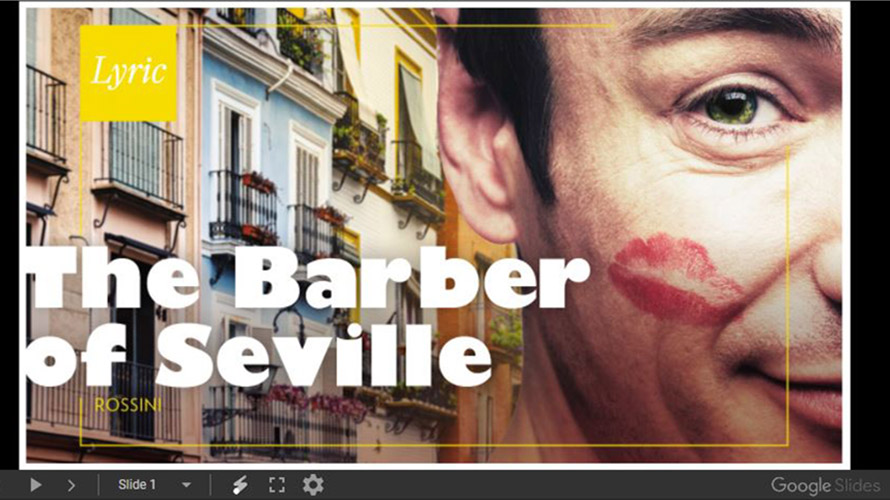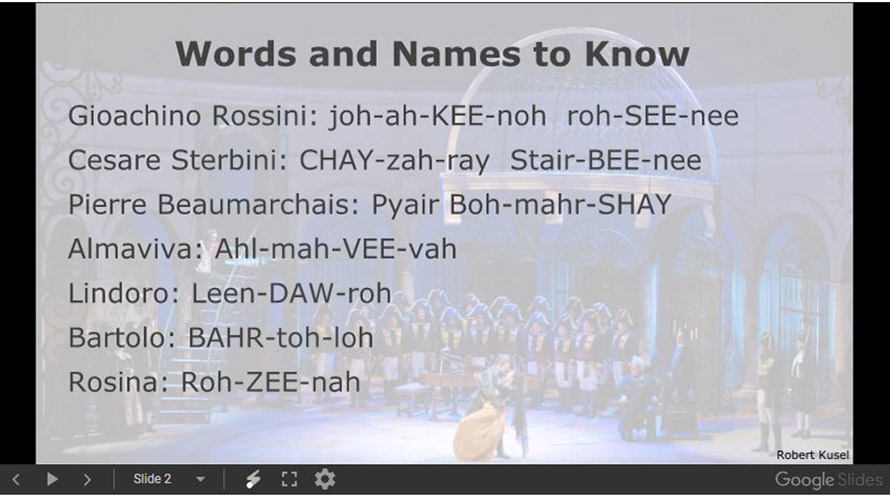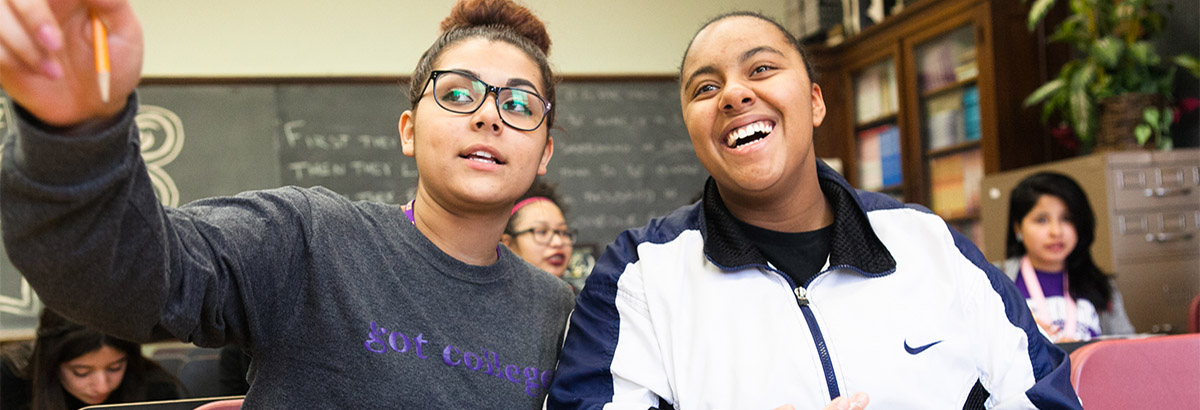September 29, 2020
How to get the most out of Lyric’s Learning Resources
Did you know that Lyric creates learning resources for our productions? Designed for students in grades 6-12, these materials can supplement a teacher’s curriculum and streaming opportunities from your very own homes. With insights into everything from The Barber of Seville to West Side Story, each page helps introduce basic plots and themes, and features selections of musical highlights with commentary, a timeline of historical context, and biographies of each production’s creators.
Learning resources can be shared in person or virtually. We recommend setting aside small blocks of time to share this content with your students and families over several days or weeks before and after streaming the performance. The more children know about an opera or musical, the more rewarding the experience of watching it can be. As you begin to explore our learning resources portal, here are some suggestions on how to make the very most of what we have to offer.
1. Choose a production from our Learning Resource portal
The first step is to choose a production that will interest a young person in your life. A full list of our learning resources can be found here.
Learning Resources Portal
2. Select a stream of your chosen production
In order to truly make the most out of the Learning Resources portal, it is important that you find a stream of your desired production. Luckily, we have ways to help you navigate finding the perfect stream.
Each week, we post an opera streaming blog to let readers know which productions are being shared from all over the world. We suggest you start here. Sometimes these productions are online for longer than the day that they premiere, and other times they stream only for select dates. Each entry will help you choose a stream that works for your schedule. Often featured in this weekly guide are free streams from The Metropolitan Opera and fan favorites from Opera Australia.
Another way to see world-class opera productions is to visit OperaVision. OperaVision hosts a long-running list of opera productions happening all over the world.
3. Begin with the overview: What is this production about?
Once you have selected a performance, begin with the overview. This is the first item on every learning resource page. The overview summarizes the characters, plot, themes, and creators of each production. Introducing important themes right away can help children think critically about through-lines in stories and productions. Google Slides also allows you to present the overview slideshow in full screen and with a pointer.


4. Musical highlights: How are these themes depicted in the music?
Musical highlights offer young people a chance to listen to important moments in an opera or musical before they watch the stream. Musical highlights also introduce clues or themes that will help young people better understand what is happening on stage. Oftentimes, stories in opera are told in different languages.
To navigate musical highlights, we suggest first playing the clip and letting your kids just listen. Then, we suggest reading the “Things to listen for” bullet points, and playing the clip again. Once the clip is over, ask if they heard the things mentioned in the bullet points. Replay the audio clip as many times as necessary, engaging in a dialogue about what your children hear and what they think the composer and artists are trying to communicate through the music. Finally, click on “English translations” so everyone knows what the singer is singing. Does the translation align with what they thought was being sung?
5. Historical context: What was happening in the world when this production was created?
These interactive timelines reveal what was happening in the world when each opera or musical was created, including milestones in the creators' lives, and world events. Operas and musicals have often been created in reaction to what is happening in the world.
Questions to ask:
- How do you think world events impacted the composer and librettist’s decision to write this story and set it to music?
- What themes do you think were introduced because of what was happening in the world?
- What do you think audiences felt about this opera or musical when they first saw it?
6. Author biographies: Who wrote the music and words for this production?
With author biographies, you can get a closer look into the people who created the production you have chosen.
Some key terms to introduce:
Composer: The person who writes the music
Librettist: The person who writes the words or script of an opera
Libretto: the words of an opera
7. Sit down and enjoy your stream
Once you’ve made your way through the Learning Resources, sit down and watch your stream. We suggest starting and stopping, or taking breaks. Operas, especially, can be long!
8. What did you learn?
After watching the performance, we suggest digesting what you watched with young people. Here are some questions that may help guide your discussion:
What was your favorite part of the performance?
Did you learn anything new?
Are there parts of the experience that differed from your expectations?
Write a brief description of what you saw and heard: Who sang which roles, what did the costumes look like, what did the setting look like?
What did you feel about the performance? How well did the performers sing and act? Did you like the costumes? Did you see the themes you learned about accurately portrayed?
